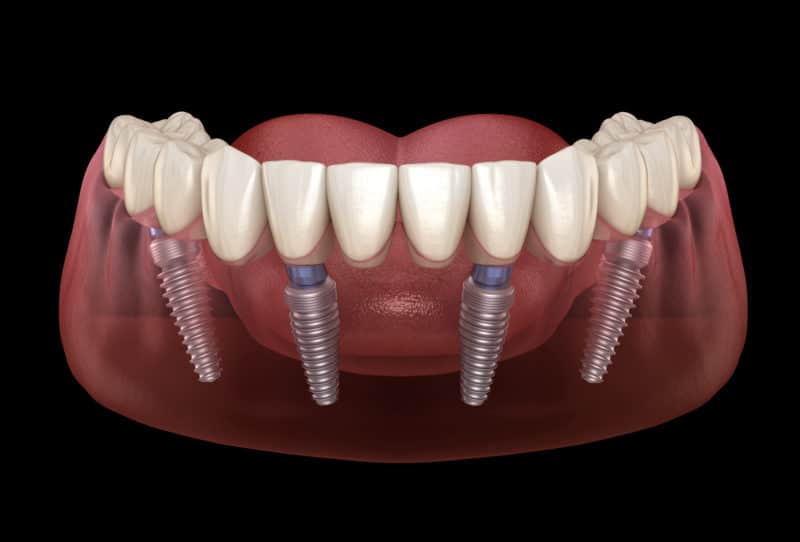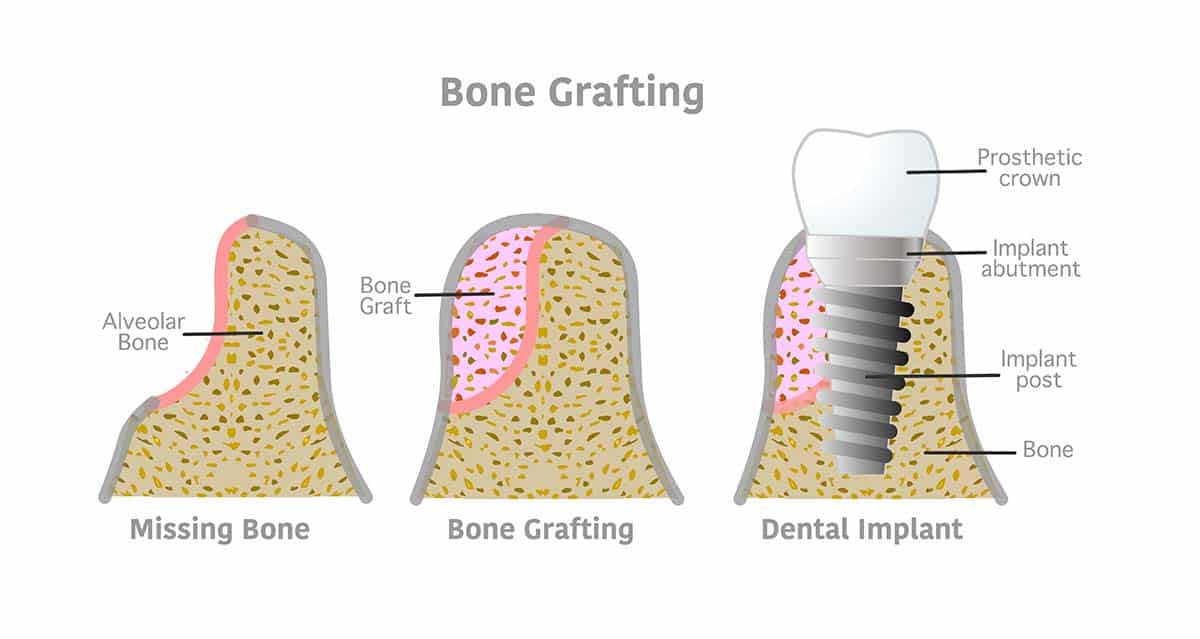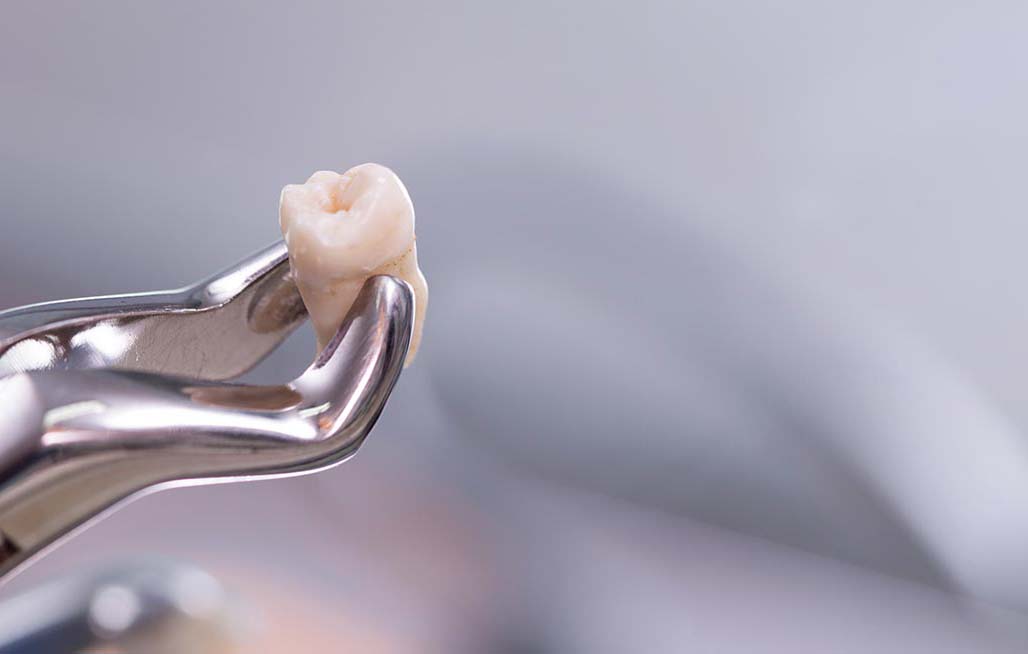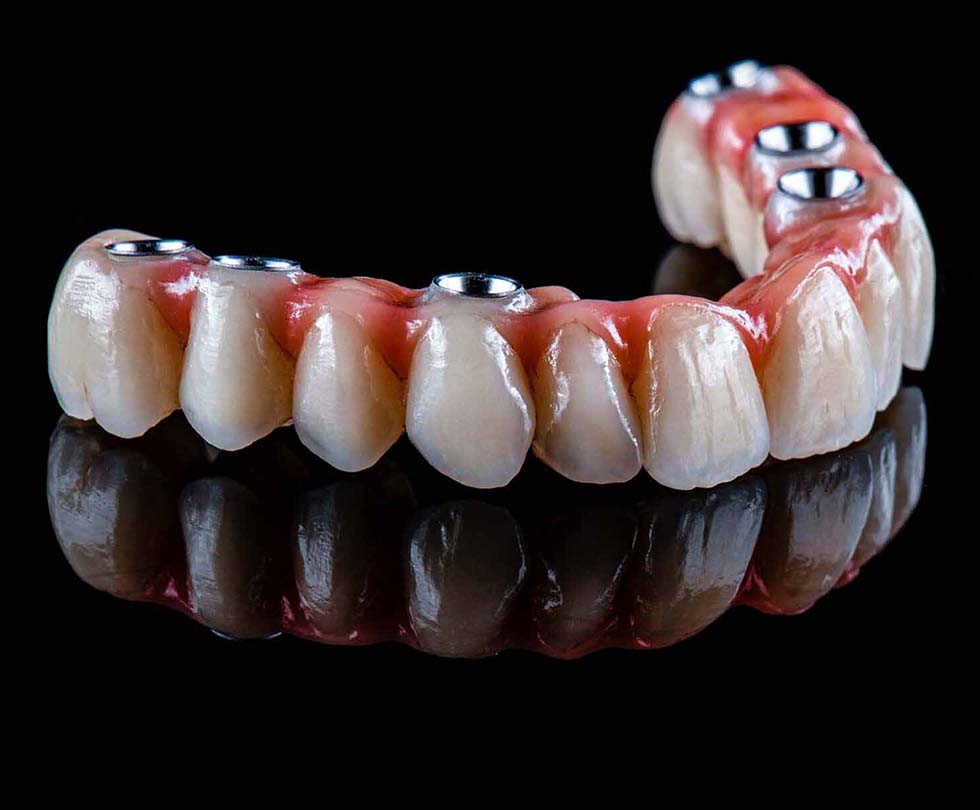If you’re currently missing a large number of teeth, you likely understand that this can create significant problems with the appearance of your smile. It can also make it difficult to properly talk and eat food like you did when you still had all of your teeth. If you want to get rid of these problems for good and restore your smile to its natural appearance, there are a variety of highly effective solutions that will replace your missing teeth.
The two most effective treatments for missing teeth are all-on-4 dental implants and dentures. When you’re looking at your various options for replacing your missing teeth, you’ll be presented with a difficult choice to make between all-on-4 dental implants and dentures. Before you make this decision, the following will provide you with a detailed look at all-on-4 dental implants vs dentures, which extends to such factors as costs, benefits, and time requirements.
All-On-4 Dental Implants Vs. Dentures
While the all-on-4 dental implant treatment offers results that are similar to those of dentures, these two treatments work in very different ways. If you want to make an informed decision on whether to purchase implants or dentures, it’s important to understand everything about these treatment options.
All-On-4 Dental Implants
If you’re missing an entire row of teeth, all-on-4 dental implants will provide you with the ability to replace a row of teeth with only four implants. If you’re unsure of what standard dental implants are, they are artificial tooth roots that are typically made from titanium. These dental implants are connected directly and securely to the jawbone. Once in position, the implants can act as support for an artificial tooth, which can come in the form of a bridge, crown, or denture.
In most cases, a dental implant is only able to provide support for a single artificial tooth. However, this isn’t true with all-on-4 dental implants. Instead, four implants can be positioned strategically around the upper or lower portion of the mouth to act as anchors for an entire row of teeth.
Since the implants are comprised of the durable titanium material, the implants will eventually fuse to the jawbone, which means that you will rarely need to replace one of these implants. Once these implants are placed in your mouth, they will remain permanently affixed to the jawbone unless they break at some point in the future.
The treatment process begins with a consultation, which usually includes an evaluation of your teeth, a CT scan, and an in-depth discussion about the various alternatives to this treatment. The CT scan is designed to identify how healthy your jawbone is, which is essential towards determining that this treatment is right for you.
If your jawbone isn’t healthy enough to support the implants, other treatments may be necessary. If your jawbone is in good condition, molds will be taken of the upper and lower jaws. These molds are then used to craft a dental bridge that will be applied in combination with the implants.
Once the date of the surgery arrives, you’ll be provided with a mild sedative that should keep you from feeling any pain while the treatment is ongoing. The first surgery involves the removal of all of your remaining teeth to make room for the implants. If any of the tissue surrounding your remaining teeth has become infected, this will be removed as well during the surgery. Once this portion of the treatment has been completed, the dental implants will then be placed in the correct position.
Two of these dental implants will be positioned around the front of your lower jaw. The other two implants are positioned around the back of the jaw at a 45-degree angle. The placement of these implants must be very precise in order for them to effectively support an entire row of artificial teeth. Once you’ve fully recovered from the surgery, you’ll finally be provided with your teeth, which will likely be adjusted slightly to ensure that they fit properly and are comfortable for you.
Dentures
As for dentures, these are missing teeth replacements that can fit directly over your gums. The artificial teeth are connected to an acrylic base that’s designed to look exactly like your gums, which means that your smile should still appear to be natural.
You can obtain either full dentures or partial dentures when you want to replace your missing teeth. Full dentures are designed to replace an entire row of teeth and are positioned in the mouth once all remaining teeth have been removed and the surrounding tissues have properly healed.
Keep in mind that the healing from having your teeth removed can take several months, which is why you should expect to be without teeth while you wait. Partial dentures, on the other hand, can replace a small number of teeth and are attached to a metal framework. Partial dentures are typically considered to be an alternative to bridges. The key difference is that dentures can be removed.
Duration of Treatment for All-On-4 Dental Implants Vs Dentures
The treatment process associated with both of these procedures can be lengthy. For dentures, the treatment will begin with the removal of any remaining teeth that need to make way for the dentures. Once the teeth have been removed, your gums will need to heal properly, which can take around 3-6 months.
During this time, our dentists will provide you with regular checkups to make sure that the gums and surrounding tissues are healing effectively. While dentures can be placed in the mouth immediately after your teeth have been removed, additional adjustments will be required once the swelling dissipates, which can be inconvenient.
As for all-on-4 dental implants, the implants will need to be prepared over a 4-8 week period, after which a surgical procedure will be used to remove your teeth. It’s at this point that you’ll be provided with some acrylic teeth that will be screwed in temporarily. The implants will remain in your gums for around six months to make sure that the area heals properly and that an infection doesn’t develop.
After your gums have become healthy, the final dentures for this all-on-4 treatment will be prepared, which can take upwards of two months. While the all-on-4 treatment process takes longer than standard dentures, you’re being provided with a permanent solution for your missing teeth as opposed to the temporary solution provided by dentures.
Benefits Provided By All-on-4 vs Dentures
Both dentures and all-on-4 dental implants offer a variety of benefits. However, all-on-4 implants are considered by many to be the best option available for tooth replacement. With dentures, you should immediately notice a boost of confidence as well as an improved quality of life, both of which occur because your smile will be full once more.
Dentures are also considered to be cost effective, which is particularly true if you only need to replace a small number of your teeth. With partial dentures, you can save a substantial sum of money. Although not as long-lasting as all-on-4 dental implants, dentures are known to last for as long as 10 years if you maintain them properly.
While dentures can provide you with a complete smile, the all-on-4 treatment is believed to be a fantastic alternative. For instance, you’ll be able to clean the artificial teeth in the exact same way as your natural teeth. Since the artificial teeth are connected to durable implants, you won’t be required to follow additional oral care guidelines, which isn’t the case with dentures.
While traditional dentures need to be removed before you go to bed each night, the all-on-4 implants are permanent teeth replacements, which allows you to avoid this issue. The permanent nature of this solution means that you won’t need to worry about damaging your teeth while eating.
It’s also important to understand that dentures come with requirements for additional cleaning tools, which will cost you money. For instance, adhesives and special cleaning solutions must be purchased alongside dentures, which isn’t true with all-on-4 dental implants. Dentures must be soaked every night in the cleaning solution that you buy.
In the morning, you must clean them extensively before you place them in your mouth, which can be very time-consuming. With the all-on-4 treatment, you can brush and floss with the same method that you used with your natural teeth.
These implants are also known to be more beneficial for the health of your jawbone than dentures, which should help to lessen the progression of jawbone loss. Likely the most notable benefit of choosing all-on-4 dental implants is that they are much more comfortable than dentures. Dentures are designed to rest directly on the gums, which can lead to ongoing discomfort and the development of painful mouth sores. On the other hand, all-on-4 implants are fastened securely in the mouth and should never cause discomfort.
All On 4 Dental Implants vs. Dentures Cost
When you’re comparing the costs of these treatments, you should keep in mind that the permanent nature of all-on-4 dental implants means that this solution will last longer than dentures. When looking specifically at the cost of dentures in Los Angeles, you should expect partial dentures to cost anywhere from $2,000-$4,000. As for full dentures, these can cost anywhere from $2,000-$8,000 per row.
The costs for all-on-4 dental implants can vary substantially from person to person based on many different factors. When you’re looking to purchase these implants, they can cost around $20,000-$55,000 for each row. However, the cost is usually below $30,000. To better understand why this treatment costs so much, you should look at the costs associated with a single implant.
In most cases, an individual implant will cost around $3,000-$3,500. If you’re replacing 10-15 teeth on each row, it’s likely that the all-on-4 treatment will be much less expensive than what it would take to replace each tooth individually.
Keep in mind that we offer a variety of financing options with low monthly payments here at Southland Dental. These financing options may allow you to get this treatment when you first believed that you wouldn’t be able to.
While the cost of dentures in Los Angeles is lower than the cost of all-on-4 dental implants, the benefits of the all-on-4 treatment significantly outweigh those of dentures. Your smile will appear natural with these implants, which is an amazing advantage of all-on-4 dental implants that you can’t get with any other solution.
At Southland Dental Care, we want to provide you with the best treatment available. When you’re looking to explore your options for replacing a missing tooth, contact our offices to schedule your free dental consultation. We’ll help you choose the best options that fit within your budget and match your needs.















